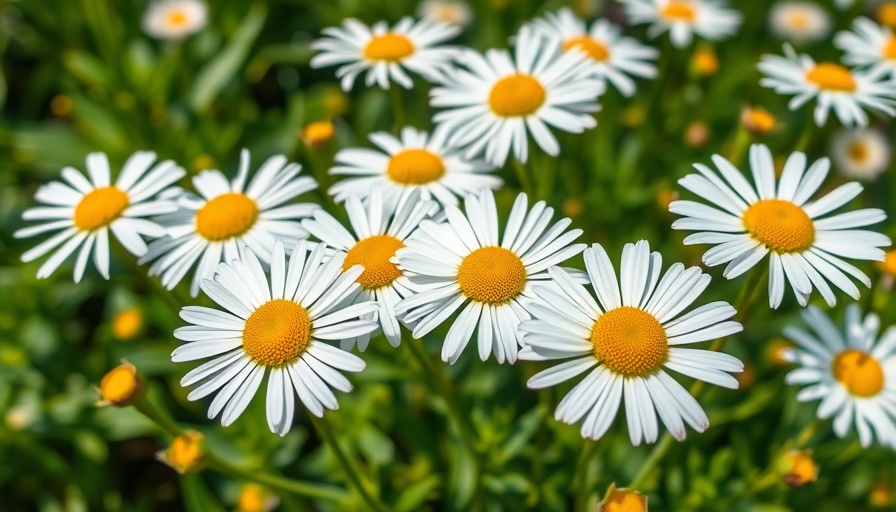
The Allure of a Chamomile Lawn: Simple and Sustainable
Imagine a lush, aromatic lawn that requires minimal care while providing a delightful sensory experience with every step. A chamomile lawn is not just a stunning alternative to traditional grass; it’s an eco-friendly choice that promotes sustainable living.
As many homeowners grow increasingly weary of the upkeep associated with traditional lawns—frequent mowing, watering, and fertilizing—a charming solution is at hand. Low-growing chamomile, particularly the Chamaemelum nobile, offers a fragrant ground cover that enhances the beauty of diverse landscapes.
Benefits of Choosing a Chamomile Lawn
Transitioning to a chamomile lawn brings numerous advantages. Unlike conventional grass, chamomile requires less maintenance, offering a perfect solution for busy people. These lawns are not only stunning but also contribute positively to the environment. They improve soil health and attract a variety of pollinators, enhancing local biodiversity.
Unlike grass, it doesn't consume nitrogen, enriching the soil instead. Walking on a chamomile lawn releases a refreshing, apple-like aroma that’s particularly enchanting for outdoor gatherings, transforming any space into a peaceful retreat.
Choosing the Right Species for Your Lawn
The key to a thriving chamomile lawn lies in selecting the right species. The preferred choice is the creeping English or Roman chamomile (Chamaemelum nobile). Unlike its taller cousin, the German chamomile, this species trails low and establishes a dense, lush mat of foliage, perfect for ground cover.
Consider the non-flowering cultivar, Treneague, if you desire a manicured grooming style without the hassle of flower growth. This variety grows only four inches tall, creating a neatly carpeted effect in your garden.
Planting Chamomile: When and How
To establish your chamomile lawn, the best season for planting is early fall or spring. Start by preparing the soil, ensuring it’s well-drained and fertile. Scatter the seeds evenly and press them lightly into the soil, then cover them lightly with a thin layer of soil. Keeping the area moist will promote successful germination, typically occurring between 14-21 days.
Maintenance: Keeping Your Chamomile Lawn Healthy
Despite its hardy nature, a chamomile lawn does require some care. Once established, it can handle foot traffic but remains sensitive to heavy trampling. Regularly remove weeds to prevent competition for nutrients. Additionally, avoid excessive watering; proper drainage is crucial to avoid root rot.
In truly challenging regions, mulching can bolster soil moisture levels and suppress weeds, ensuring your lawn remains vibrant and healthy throughout the growing season.
Transforming Your Outdoor Space with Chamomile
A chamomile lawn can be more than just a substitute for traditional grass. Consider blending it creatively with other ground covers or using it as a border along pathways. The visual appeal of chamomile lawns can be further enhanced by integrating **pollinator-friendly plants** that not only beautify the space but create a haven for beneficial garden wildlife.
The fragrant flowers can serve as a charming decoration, particularly if you're also considering **native plants** known for attracting butterflies and bees, enriching both the ecology and aesthetics of your garden.
Conclusion: Why Choose Chamomile for Your Lawn?
As gardening trends shift towards sustainable practices, a chamomile lawn stands out as a champion for eco-conscious homeowners. Its low maintenance, aromatic essence, and wildlife benefits make it an excellent choice for a modern yard.
Start your journey toward crafting a greener future by exploring the world of chamomile lawns, and watch your garden flourish in beauty and harmony with nature. Whether you’re an experienced gardener or just starting, implementing a chamomile lawn can rejuvenate your outdoor experiences and reduce the burden of lawn maintenance.
Act now to create your chamomile paradise in your backyard!
 Add Row
Add Row  Add
Add 




Write A Comment